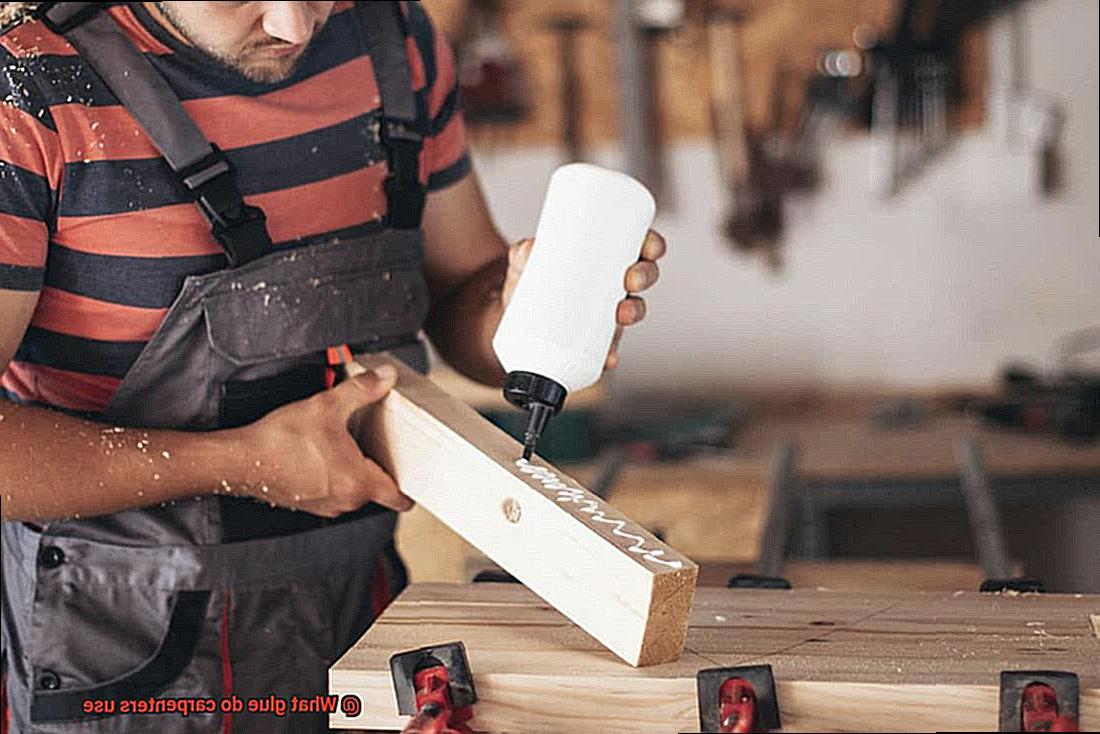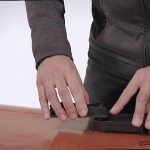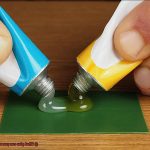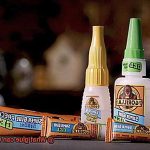It’s the unsung hero of woodworking, the magical potion that keeps every joint tight and every project intact. But here’s a little secret: not all glues are created equal. Nope, carpenters have a whole arsenal of sticky stuff at their fingertips, each one specially designed for different jobs and materials. So whether you’re a newbie with a hammer or a seasoned pro with sawdust in your veins, understanding the glue that carpenters swear by can take your projects from wobbly to wow-worthy. So grab your tool belt and get ready to dive into the sticky world of carpenter’s glue – it’s about to get real adhesive up in here.
What is Wood Glue and How to Use It?
Contents
- 1 What is Wood Glue and How to Use It?
- 2 Benefits of Using Epoxy Resin for Carpentry Projects
- 3 Advantages of Using Construction Adhesive
- 4 How Super Glue Can Help in Carpentry Projects
- 5 Uses of Polyurethane Glue in Carpentry
- 6 Contact Cement: Bonding Laminate and Veneer
- 7 Hide Glue: Traditional Woodworking Adhesive
- 8 Choosing the Right Glue for the Job
- 9 Conclusion
Wood glue, a carpenter’s best friend, is a versatile adhesive that can work wonders in woodworking projects. Whether you’re a seasoned woodworker or a passionate DIY enthusiast, understanding what wood glue is and how to use it correctly can elevate your craft to new heights. In this comprehensive guide, we will explore the different types of wood glue available and provide step-by-step instructions on how to achieve a strong and durable bond.
Types of Wood Glue:
PVA Glue:
Known as the carpenter’s glue or white glue, PVA glue is the go-to adhesive for most woodworking applications. With its clear drying properties and relatively fast drying time, it forms a strong bond on porous surfaces like softwoods and plywood.
Epoxy Resin Glue:
When exceptional strength and durability are required, epoxy resin glue is the answer. This two-component adhesive consists of a resin and a hardener that need to be mixed before application. It is perfect for bonding large or heavy pieces of wood, withstanding heavy loads and offering excellent resistance to moisture and temperature variations.
Hide Glue:
Derived from animal collagen, hide glue has stood the test of time in woodworking projects. Offering a strong bond that can be easily reversed using heat or moisture, it is ideal for antique furniture repair or restoration work.
Cyanoacrylate (CA) Glue:
For quick repairs or small projects that demand instant bonding, CA glue is the way to go. Commonly known as super glue or instant adhesive, it bonds quickly to wood surfaces. However, it is important to note that CA glue is not recommended for load-bearing applications or projects exposed to high stress or moisture.
How to Use Wood Glue:
- Prepare the surfaces: Start by ensuring that the wood surfaces are clean, dry, and free from dust or debris. Smooth out the surfaces if necessary to create an optimal bonding surface.
- Apply the glue: Use a brush, roller, or nozzle applicator to apply an even layer of glue to one of the surfaces. Be mindful not to apply an excessive amount of glue, as it can squeeze out when clamped.
- Clamp the pieces: With precision and care, press the two wood surfaces together firmly and secure them with clamps. The clamping pressure guarantees a strong bond and prevents any shifting during the drying process.
- Remove excess glue: After applying the clamps, wipe off any excess glue that oozes out from the joint using a damp cloth or sponge. It is crucial to remove excess glue while it is still wet for easy cleanup.
- Allow drying time: The drying time varies depending on the type and brand of glue used. Follow the manufacturer’s instructions regarding the recommended drying time before removing the clamps or applying any finishing touches.
Benefits of Using Epoxy Resin for Carpentry Projects

Are you a carpentry enthusiast looking to take your projects to the next level? Look no further than epoxy resin. This versatile adhesive has become a firm favorite among carpenters for its exceptional bonding properties and numerous benefits. In this article, we’ll explore the advantages of using epoxy resin for your carpentry projects, from its impressive durability to its ease of use.
Unbreakable Bonds:
Epoxy resin is renowned for its ability to form strong and long-lasting bonds between various materials, ensuring that your carpentry creations stand the test of time. Whether you’re working with wood, metal, concrete, or even plastics, epoxy resin will provide a reliable and durable adhesion.
Defying the Elements:
Moisture, chemicals, and temperature changes can wreak havoc on your carpentry projects. However, with epoxy resin, worry no more. Its exceptional resistance to these factors makes it an ideal choice for both indoor and outdoor carpentry projects, guaranteeing longevity regardless of the environment.
Seamless Finish:
Carpenters know that attention to detail is crucial when it comes to aesthetics. Epoxy resin’s gap-filling properties allow it to effortlessly fill in gaps and cracks in materials, giving your project a smooth and seamless finish. Say goodbye to unsightly imperfections and hello to flawless craftsmanship.
Time Is of the Essence:
In the fast-paced world of carpentry, every minute counts. Fortunately, epoxy resin boasts a relatively fast curing time compared to other adhesives. This means you can continue working on your project sooner without compromising quality or waiting for glue to dry.

Versatility at Its Finest:
Carpentry is a diverse craft that requires adaptability. Thankfully, epoxy resin is up to the challenge. Its compatibility with various materials makes it a go-to adhesive for carpenters working on different types of projects. No matter what you’re building, epoxy resin has you covered.
User-Friendly Application:
With epoxy resin, precision and ease of use go hand in hand. Its simple mixing and application process allows carpenters to achieve desired results without hassle or confusion. Say goodbye to complex techniques and hello to effortless bonding.
Customization Galore:
Epoxy resin offers carpenters the freedom to further personalize their projects. Once cured, it can be sanded and painted, allowing for endless customization options and providing the finishing touches that make your work truly unique.
Advantages of Using Construction Adhesive
When it comes to carpentry projects, the right adhesive can make all the difference. Construction adhesive is the superhero of glues, offering a multitude of advantages that surpass traditional fasteners like nails and screws. In this blog post, we will delve into the many benefits of using construction adhesive in your carpentry endeavors.
Unbreakable Bonds:
Construction adhesive boasts exceptional bonding power, forming unyielding connections between materials such as wood, metal, concrete, and plastic. It creates bonds that can withstand substantial stress, ensuring structural integrity and eliminating weak joints.
Stability at Its Finest:
Unlike traditional fasteners, construction adhesive provides enhanced stability by evenly distributing loads across surfaces. This reduces stress concentrations that weaken structures over time. With added stability, your finished projects will stand the test of time.

Aesthetics Made Perfect:
Say goodbye to unsightly nails and screws ruining the visual appeal of your work. Construction adhesive offers a seamless finish without visible hardware. Your carpentry projects will have a clean and professional look that’s sure to impress.
Silence is Golden:
Construction adhesive doesn’t just bond materials together; it also acts as a noise reduction agent. By absorbing vibrations, it reduces noise transmission between surfaces. Whether you’re building acoustic panels or soundproofing a room, construction adhesive has got your back.
Waterproof Wonder:
With its resistance to moisture and harsh environmental conditions, construction adhesive is perfect for both interior and exterior applications. Its waterproof seal prevents water penetration, ensuring your bond remains strong even when faced with humidity or exposure to water.
Versatility Unleashed:
From wood to metal, concrete to ceramic, construction adhesive is compatible with a wide range of materials. This versatility makes it the go-to adhesive for various carpentry applications. No matter the project, construction adhesive will provide a reliable and long-lasting bond.
Easy-Peasy Application:
Using construction adhesive is a breeze. It comes in convenient squeeze tubes or cartridges that can be easily applied with a caulking gun. Its viscous consistency allows for precise application without the need for complex tools. Plus, it has a longer open time, giving you ample opportunity to adjust and align materials before the bond sets.
How Super Glue Can Help in Carpentry Projects
In the world of carpentry, choosing the right adhesive can make or break a project. While there are many options available, one adhesive stands out as a true superhero: super glue. Also known as cyanoacrylate adhesive, super glue is a versatile and powerful tool that can revolutionize your woodworking endeavors. In this article, we will explore how super glue can enhance your carpentry projects and ensure their success.
Rapid Drying and Unbreakable Bonds:
Super glue’s claim to fame lies in its lightning-fast bonding process. With a mere touch, it forms an unbreakable bond on surfaces, allowing you to work efficiently without wasting precious time.
Perfect for Trim and Molding:
Are you tired of trim and molding coming loose? Super glue is here to save the day. Its formidable bond ensures that these delicate parts remain securely attached, even with constant use.
Master of Material Bonding:
Wood, plastic, metal, glass – super glue conquers them all. This adhesive is a jack-of-all-trades, making it suitable for a wide range of carpentry applications.
Conquering Moisture and Temperature Challenges:
Whether you’re working indoors or braving the elements outdoors, super glue can handle it all. Its resistance to moisture, humidity, and extreme temperatures ensures that your bonds stay strong no matter what.
Filling Gaps and Cracks:
Bid farewell to imperfections in your woodwork. Super glue effortlessly fills gaps and cracks, fortifying the structure and preventing further damage.
Safety First:
While super glue is a remarkable adhesive, proper handling is essential. Always wear protective gloves and work in well-ventilated areas to avoid any sticky situations.
Large-Scale Considerations:
Although super glue works wonders for smaller projects, it may not be the best choice for larger structural applications. In those instances, specialized wood glues or epoxy adhesives are better suited to ensure a secure and durable bond.
Uses of Polyurethane Glue in Carpentry
In the world of carpentry, having the right adhesive is crucial for creating structures that are not only strong but also durable. That’s where polyurethane glue, also known as PU glue or Gorilla glue, comes into play. This versatile adhesive has become a staple in carpentry due to its remarkable bonding capabilities. In this blog post, we will explore the various uses of polyurethane glue in carpentry, highlighting its versatility and reliability.
Woodworking Wonders:
Polyurethane glue is a go-to adhesive for woodworking projects that require a sturdy and long-lasting bond. Whether you’re constructing furniture, cabinets, or wooden structures, this adhesive will not disappoint. Its ability to bond different types of wood, as well as other materials like metal and plastic, makes it a reliable choice for a wide range of applications.
Edge Banding Excellence:
For that professional finish on plywood or particleboard edges, polyurethane glue is the secret weapon. It ensures that the edge banding material remains firmly in place, even under stress or changes in temperature and humidity. No more worries about unsightly edges.
Laminating Made Simple:
Creating thicker and stronger panels through laminating is made easy with polyurethane glue. Whether you’re working with plywood, MDF, or other composite boards, this adhesive expands as it cures, filling any gaps or imperfections between layers and creating a rock-solid bond.
Joinery Juggernaut:
Joinery techniques like mortise and tenon joints or dovetail joints require an adhesive that can withstand stress and strain. Polyurethane glue rises to the challenge, providing excellent bonding strength for joints that will stay secure over time.
Repair Like a Pro:
Accidents happen, but with polyurethane glue, repairing damaged or broken wooden items is a breeze. Loose joints, gaps, or cracks in wood furniture, doors, or frames can be easily fixed. The adhesive’s ability to bond different materials also makes it suitable for repairing metal handles or plastic parts.
Braving the Elements:
Polyurethane glue is not afraid of Mother Nature. Its resistance to moisture and weathering makes it ideal for exterior carpentry applications. From outdoor furniture to decks and fences, this adhesive forms a bond that can withstand rain, sunlight, and temperature fluctuations.
General Assembly:
Polyurethane glue is a go-to adhesive for general carpentry assembly tasks. Whether it’s attaching trim pieces, molding, or any other components, the glue’s versatility ensures a reliable bond. It can be used on various surfaces and materials, making it a convenient choice for many carpentry projects.
Contact Cement: Bonding Laminate and Veneer
When it comes to bonding laminate and veneer materials, contact cement is the go-to adhesive for carpenters. Its strong adhesion and excellent bonding properties make it a reliable choice for projects involving laminate countertops, cabinetry, and furniture. In this article, we will delve into the process of using contact cement for these materials, providing you with tips, best practices, and even some safety considerations.
Understanding Contact Cement:
Contact cement is a solvent-based adhesive that instantly bonds two surfaces when brought into contact. Its effectiveness shines on large areas or curved surfaces where other adhesives may fall short. This versatile adhesive is commonly used in carpentry projects due to its reliability.
Preparation is Key:
Before applying contact cement, thorough preparation is essential. Ensure that both the laminate and veneer surfaces are clean, dry, and free from any dust or debris. Use a mild detergent and a soft cloth to clean the surfaces if necessary. Additionally, gather the necessary tools such as a brush or roller for applying the contact cement.
Applying Contact Cement:
Apply an even layer of contact cement to both the laminate and veneer surfaces using a brush or roller. Follow the manufacturer’s instructions regarding the recommended drying time. Typically, you’ll need to wait until the adhesive becomes tacky to the touch.
Bonding the Surfaces:
Once the adhesive reaches the appropriate tackiness, carefully align the laminate and veneer surfaces together. Begin by placing one edge in position and gradually press down the rest of the surfaces using a roller or block of wood. Apply firm pressure to ensure a strong bond.
Finishing Touches:
After successfully bonding the laminate and veneer materials, use a router or trimmer to trim any excess edges or overlap. This step adds a polished and professional touch to your project.
Safety Precautions:
When working with contact cement, safety is paramount. Ensure that you are working in a well-ventilated area to avoid inhaling the fumes. Additionally, wear gloves and protective eyewear to shield your skin and eyes from potential contact with the adhesive. Lastly, store the contact cement in a cool, dry place away from any sources of ignition.
Hide Glue: Traditional Woodworking Adhesive
When it comes to woodworking, there is a certain allure in using traditional materials and techniques. One such material is hide glue, a tried-and-true adhesive that has been used by carpenters for centuries. Its historical significance, reliability, and repairability make it a favorite among craftsmen. Let’s delve into the world of hide glue and explore its history, uses, and benefits in traditional woodworking.
History of Hide Glue:
Hide glue has a long and storied history in the world of carpentry. It is made from the collagen found in animal hides, such as cows and horses. The hides are processed to extract the collagen, which is then turned into granules or flakes. Before use, these granules or flakes need to be dissolved in water, creating a gelatinous adhesive that can be applied to wood surfaces.
Benefits of Hide Glue:
- Reversible Nature: One of the standout advantages of hide glue is its ability to be reversed. Heat can be applied to soften the glue and allow for disassembly, making it ideal for furniture restoration or projects that may require future adjustments.
- Long Open Time: Unlike some other adhesives that dry quickly, hide glue has a relatively long open time. This means that it stays workable for a longer period, allowing carpenters to take their time in assembling and adjusting parts before the glue sets. No need to rush.
- Excellent Adhesive Strength: When it comes to heavy-duty applications like furniture construction or instrument making, hide glue reigns supreme. Its adhesive strength is top-notch, ensuring a durable and reliable connection between wood parts.
- Wood Compatibility: Hide glue forms a strong bond with wood fibers, making it an ideal choice for woodworking projects. It also has the ability to penetrate into the wood pores, resulting in an even stronger bond. Your creations will stand the test of time.
Drawbacks of Hide Glue:
- Susceptible to Moisture: While hide glue offers many benefits, it does have its weaknesses. One of them is its susceptibility to moisture and humidity. Over time, exposure to these elements can weaken the bond formed by hide glue. If your project will be exposed to moisture or outdoor conditions, you may want to consider an alternative adhesive.
- Skill and Practice Required: Using hide glue effectively requires some skill and practice. It is not as straightforward as applying modern adhesives. Carpentry professionals often have years of experience working with hide glue and have mastered its application techniques. Don’t be discouraged if it takes a few tries to get it right.
Choosing the Right Glue for the Job
When it comes to carpentry projects, selecting the right glue is essential for ensuring a strong and durable bond. With so many options available, it’s important to consider several factors before making your decision. Here are some key factors to keep in mind when choosing the right glue for your carpentry project:
- Type of Materials: Consider the materials you’ll be bonding together. Wood glue is ideal for joining pieces of wood, while construction adhesive is versatile and can bond a wide range of materials including wood, metal, and concrete.
- Strength and Durability: Think about the strength and durability you need for your project. Wood glue and construction adhesive are known for their strong bonds, while epoxy glue provides extra strength for tasks that require filling gaps or repairing broken pieces.
- Quick Bonding: If you need a quick bond, consider instant glue or cyanoacrylate glue. These glues bond quickly and securely, making them suitable for small repairs or projects that require immediate strength.
- Outdoor or Moisture Exposure: For outdoor projects or materials that will be exposed to moisture, choose waterproof glue. This specially formulated glue resists water and prevents the bond from weakening over time.
- Drying Time: Consider the drying time of the glue you choose. Some glues dry quickly, allowing for faster completion of projects, while others may require longer drying times before the bond is fully set.
- Ease of Use and Cleanup: Think about how forgiving the glue is in terms of repositioning materials before it sets. Some glues allow for more flexibility in terms of repositioning, while others have a more permanent bond once applied.
By considering these factors and understanding the properties of different types of glues, you can choose the right glue for your carpentry project and ensure a strong and long-lasting bond. Whether you’re joining pieces of wood together, bonding different materials, or working on an outdoor project, there’s a glue out there that’s perfect for the job. So, take your time, consider your options, and get ready to create something amazing with the right glue in hand.
Carpenters use a variety of glues depending on the specific task at hand. The type of glue chosen can greatly impact the strength and durability of the bond.
One common type of glue used by carpenters is wood glue. Wood glue is specifically designed for bonding wood to wood. It has a high strength and dries clear, making it ideal for joining pieces of wood together.
Another popular choice is construction adhesive. It is a versatile adhesive that can bond a wide range of materials including wood, metal, and concrete. Construction adhesive is known for its strong bond and ability to withstand heavy loads.
For projects that require a quick bond, carpenters may opt for instant glue or cyanoacrylate glue. This type of glue bonds quickly and securely, making it suitable for small repairs or projects that require immediate strength.
Epoxy glue is another option commonly used by carpenters. It consists of two components that need to be mixed together before application. Epoxy glue provides a strong and durable bond, making it suitable for tasks that require extra strength such as filling gaps or repairing broken pieces.
When working with outdoor projects or materials that will be exposed to moisture, carpenters often choose waterproof glue. This type of glue is specially formulated to resist water and prevent the bond from weakening over time.
It’s important for carpenters to consider the drying time of the glue they choose. Some glues dry quickly, allowing for faster completion of projects, while others may require longer drying times before the bond is fully set.
Additionally, carpenters should take into account the ease of use and cleanup when selecting a glue. Some glues are more forgiving and allow for repositioning of the materials before they set, while others have a more permanent bond once applied.
q8dfuMbTbek” >
Conclusion
Carpenters rely on a variety of glues to tackle their woodworking projects.
From the classic wood glue to the versatile construction adhesive, these craftsmen know how to choose the right adhesive for the job. With its strong bond and quick drying time, wood glue is a go-to option for joining pieces of wood together.
The beauty of these glues lies in their ability to create durable connections that withstand the test of time.






